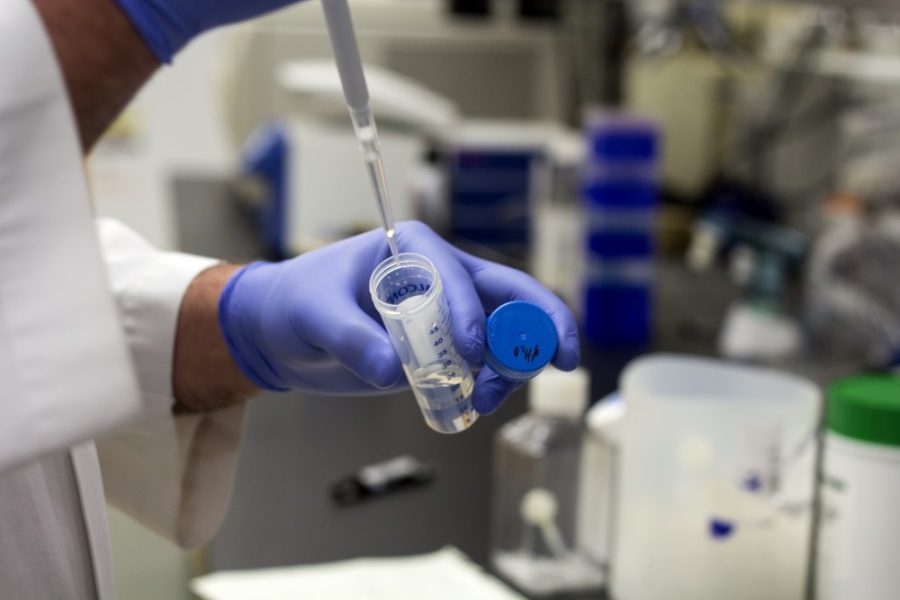To improve the health outcomes of patients with emergency medical conditions, the University of Arizona’s College of Medicine, along with five other nationalized institutions, has been chosen to lead the National Institutes of Health’s new clinical and research initiative: Strategies to Innovate Emergency Care Clinical Trials Network — also known as SIREN.
SIREN’s mission is to implement accessible infrastructure for approved, multi-site clinical experiments related to neurological, heart, blood, lung and trauma events within the network.
“We have established a series of research initiatives where we took on the needs of one of our clinical partners, Banner Health,” said Dr. Charles B. Cairns, dean of the UA College of Medicine. “Our first big goal was to bond our strengths [and] identify leaders.”
According to Cairns, this multi-disciplinary approach connects the experts within emergency medicine and of other medical backgrounds.
Cairns is the principal investigator for the UA regional hub, collaborating with other academic and non-academic clinical centers.
“Research is important and we want everyone to engage in it if they want to,” said Karen Lutrick, the SIREN project manager at the UA College of Medicine.
RELATED: UA research team works to cure memory loss in heart bypass patients
Each hub provides scientific leadership and administrative oversight to its multiple satellite sites, the NIH reported.
The UA’s healthcare partnership with Banner Health, locally and in Phoenix, unites scientific teams to pinpoint current and future acute and chronic state health needs. Prominent emergency conditions close to home, according to Cairns, include neurological, cardiac and respiratory disorders, in addition to senior diseases.
Of 136 million emergency department visits nationwide, data showed nearly 16 million resulted in hospital admission, according to a 2011 report by the Centers for Disease Control and Prevention.
“I believe that the results from these clinical trials will definitely reinforce Arizona as a national leader in emergency medicine, research and care,” Cairns said. “Our infrastructure and research networks have helped saved lives in Arizona, as well as our publications, by showing other states how to conduct telephone CPR and treat head injuries within prehospital settings around the world. I have no doubt that the results of the SIREN network will have at least that much impact if not more, given the different specialties involved.”
Although the NIH initiative will span at least five years, certain trials may exceed the time period set for this research endeavor.
“The trials will have different durations depending on the science-based decisions, like how many years of follow-up or data gathering is needed,” Lutrick said. She estimates most experiments will last a minimum of three years.
Numerous “Stroke Hyperglycemia Insulin Network Effort” trials are currently being conducted at the university through the initiative network, according to the UA College of Medicine website.
The UA’s satellite sites include Banner — University Medical Center Tucson, Banner — University Medical Center South Campus, Banner — University Medical Center Phoenix, Chandler Regional Medical Center, HonorHealth Scottsdale Osborn Medical Center and Maricopa Medical Center.
RELATED: UA offers high-tech labs for students to explore, work
NIH hub grants were awarded to Emory University, Brown University, Tufts University, the University of Texas Health Science Center at Houston, Orlando Regional Medical Center and the UA.
Initial funding covers the base setup of each hubs’ clinical trials, whereas grant sums depend on individual studies and their locations. Contractual reimbursement was budgeted during the planning development and will be distributed to medical center professionals, clinicians and participants.
The six hubs’ principal investigators function as a Coalition for Research in Emergency Medicine to “benefit from each other’s ideas, research, expertise and patient populations,” Cairns said.
The network also consists of one clinical coordinating center at the Medical University of South Carolina and one data coordinating center at the University of Michigan.
The UA’s SIREN proposal strategy, which was accepted a few weeks ago, underwent NIH peer-review based on its medical institute’s prior experience with cardiac necessitation, trauma and emergency medical services research, investigator qualifications and subsequent application methods.
Cairns and his team believe that once the data is analyzed, the SIREN initiative will lead the country in implementing new, effective emergency department practices to treat the emergency conditions that were studied.
By the end of 2022, Cairns approximate the UA hub will organize 20 to 50 clinical experiments.
“There are over a 130 million patients treated in the emergency departments of the United States each year,” Cairns said, “so clearly whatever positive research we have will develop protocols that will treat millions of people every year.”
Follow the Daily Wildcat on Twitter








